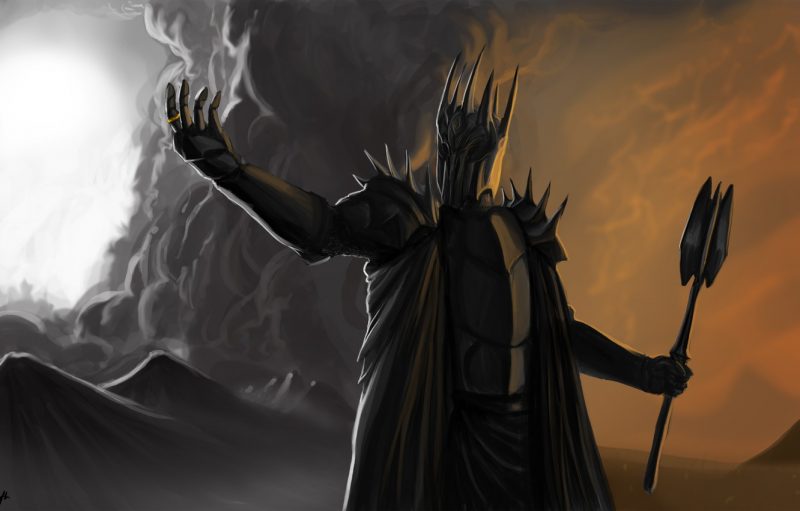The legendarium abounds with malevolent characters who have sown wickedness across every inhabited realm. However, among them, Melkor and Sauron stand out as the most renowned. In the earlier ages, specifically the pre-First and First Age, Melkor instilled terror in the hearts of all who dwelt there, while in the Second and Third Age, his loyal lieutenant, Sauron, assumed the mantle. Middle-earth bore witness to countless unimaginable atrocities perpetrated by Melkor and Sauron. They were responsible for the deaths of millions of humans, dwarves, and Elves, orchestrating the downfall of splendid cities like Gondolin and Nargothrond and ruthlessly felling the majestic trees of Valinor. And when we add the name of Gothmog, the Balrog king, to this sinister duo, the agony wrought by these individuals pervades the pages of Tolkien’s works.
Nevertheless, it is intriguing that the actual number of characters slain directly by these three figures, who instantly come to mind when contemplating the darkness in Middle-earth, has consistently bewildered me. Taking into account the entire legendarium, Sauron claimed four lives, while Melkor and Morgoth each took only two. Naturally, I am not referring to the common folk who perished in battle or lived their lives in Arda. Instead, I am focusing on the harm they inflicted upon the significant characters within the story. It is remarkable how these three dread-inducing names brought about the demise of so few “central” characters.
For your convenience, I have compiled a list of these three villains and endeavored to elucidate the reasons behind their actions and the methods by which they achieved their nefarious goals.

Melkor and Finwe
Melkor, an ancient entity predating the very essence of life, has ceaselessly sought to inflict harm through his vast powers. Among his notable deeds, Melkor orchestrated the overthrow of Illuin and Ormal, desecrating the trees of Valinor years later in collaboration with the malevolent Ungoliant. However, when it comes to the individuals whom Melkor himself has directly injured, only two names come to the fore. The sole intentional and deliberate victim of his malice is Finwë, the father of the renowned Feanor.
Exploiting the absence of the entire Valar populace during a grand festival, Melkor clandestinely ventured into Aman with Ungoliant. There, he impaled the trees of Valinor with his spear, causing their lifeblood to flow and quenching the insatiable thirst of Ungoliant. Once the trees were drained, they set their course northward towards Formenos, the dwelling of Feanor. It happened that Feanor was also absent, attending the festivities at the time. Unbeknownst to Melkor, Feanor had entrusted the Silmarils, radiant jewels of immeasurable worth, to his father’s safekeeping. Regardless of Melkor’s awareness of this fact, he proceeded to Formenos and ruthlessly stole the Silmarils, not hesitating to claim the life of Finwë in the process. Finwë likely perished while defending the precious Silmarils, thus becoming the first victim directly slain by Melkor’s hand.
Nevertheless, this fateful choice exacted a heavy toll upon Melkor and the destiny of Middle-earth. Had Melkor merely desecrated the trees and departed, the course of events might have unfolded differently. However, Feanor’s subsequent slaying of his father and the theft of the Silmarils proved to be a pivotal moment that irrevocably altered the course of Middle-earth’s history. This momentous act spurred Feanor to embark upon a journey to Middle-earth, thereby introducing another name to Melkor’s roster of adversaries: Fingolfin.
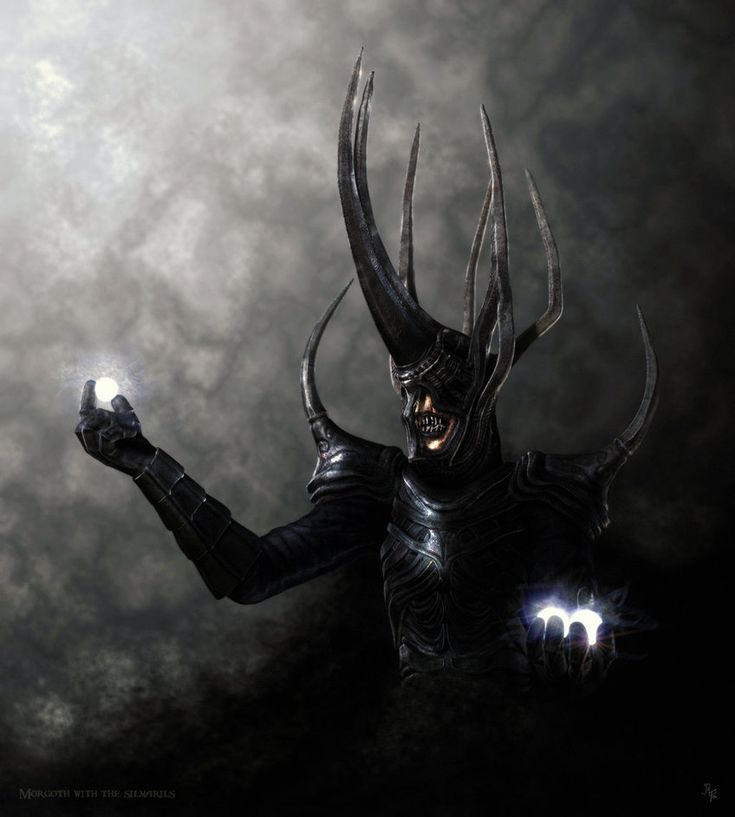

Melkor and Fingolfin
Following Melkor’s defeat in the Battle of Dagor Aglareb, he retreated within the confines of Angband, sealing its gates and concealing himself within. Angband remained besieged for a grueling span of sixty years, during which the Elves migrated and established their realms in the mortal lands. During this extended period of turmoil, Fingolfin ascended to become the king of the Noldor.
The respite was shattered in FA 455 when Melkor unleashed his meticulously prepared armies upon the Elves and humans, decisively repelling their forces with the aid of his fearsome new creations—the dragons. This infamous clash, known as the Dagor Bragollach, stands as one of Melkor’s most remarkable achievements, as he swiftly obliterated the entire siege through his sudden assault.
Tragically, this crushing defeat stirred such profound grief and anger within Fingolfin that he, propelled by his emotions, mounted his steed and rode alone to the very gates of Angband, defiantly challenging Melkor to a duel. Engaged in a fierce battle, Fingolfin ultimately succumbed to Melkor’s might. Engaging Melkor in single combat was an audacious act bordering on madness. Nonetheless, Fingolfin fought valiantly, inflicting numerous wounds upon Melkor. In the end, however, it was Melkor who emerged victorious. Fingolfin became the second victim to fall by Melkor’s hand, yet not without delivering a final blow that would forever mar Melkor’s foot and afflict him in the ages to come. Having vanquished the Noldor king through individual combat, Melkor would go on to consolidate his triumph, casting his suffocating darkness over all of Middle-earth in the future.
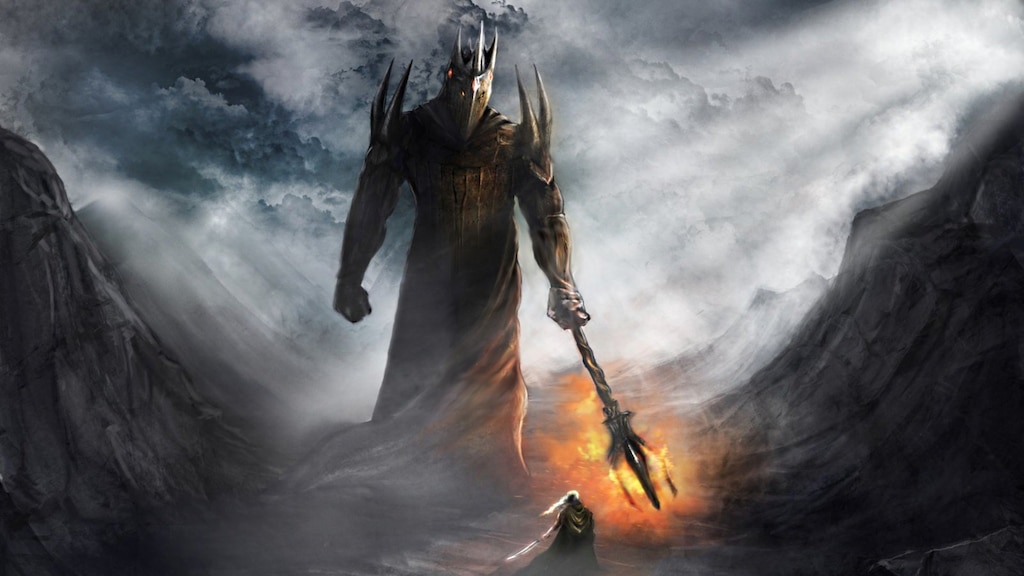

Sauron and Gorlim
The fate of Gorlim, whether he met his demise at the hands of Sauron, remains shrouded in uncertainty. While Sauron pronounced a death sentence upon Gorlim, it is worth noting that the actual executor of this sentence remains unknown.
Amidst the disarray that followed the Dagor Bragollach, some individuals persisted and valiantly continued their resistance. Barahir and his steadfast band of twelve men exemplified this unwavering spirit as they persisted in their relentless battle, relentlessly pursuing the passing orc forces. However, their unwavering dedication eventually led to their capture. Among them, Gorlim was seized and presented before Sauron himself. Sauron, cunning as ever, offered a false promise, claiming he would reunite Gorlim with his wife, Eilinel, in exchange for divulging the whereabouts of Barahir and his comrades. Persuaded by this illusion of hope, Gorlim ultimately betrayed Barahir and his loyal friends by disclosing their location. Yet, Sauron swiftly revealed the deception, reneging on his promise and promptly condemning Gorlim to face the executioner’s justice.

Sauron and Celebrimbor
Sauron, driven by his desire to bring discord to Middle-earth, sought to accomplish his objective through the rings he planned to forge. By distributing the rings among the elves, dwarves, and humans, and ultimately wielding the One Ring that he intended to create, he aimed to assert dominion over all. To achieve this grand scheme, Sauron meticulously laid the groundwork. Assuming the guise of Annatar, he infiltrated the elven realms, presenting himself as a benefactor and cultivating friendships by bestowing gifts upon them. During this process, he formed a bond with Celebrimbor, who resided in Eregion. Although Celebrimbor harbored reservations, being a skilled smith, he found himself unable to resist the knowledge and teachings Sauron imparted.
With Celebrimbor convinced to forge the rings, Sauron’s plan veered off course. Unbeknownst to Sauron, Celebrimbor dispersed the rings, scattering them across the realms, defying Sauron’s intentions. Filled with fury upon discovering this betrayal, Sauron shed his deceptive guise and unleashed his armies upon Eregion, intent on uncovering the whereabouts of the rings. Elrond and the Elven forces dispatched by Gil-Galad valiantly sought to defend the region, but Sauron relentlessly drove them back. Capturing Celebrimbor, Sauron subjected him to excruciating torment, extracting from him the knowledge of the rings’ locations. Ultimately, Sauron ended Celebrimbor’s life, gruesomely displaying his lifeless body impaled upon a stake, serving as a stark warning to all who dared defy him.
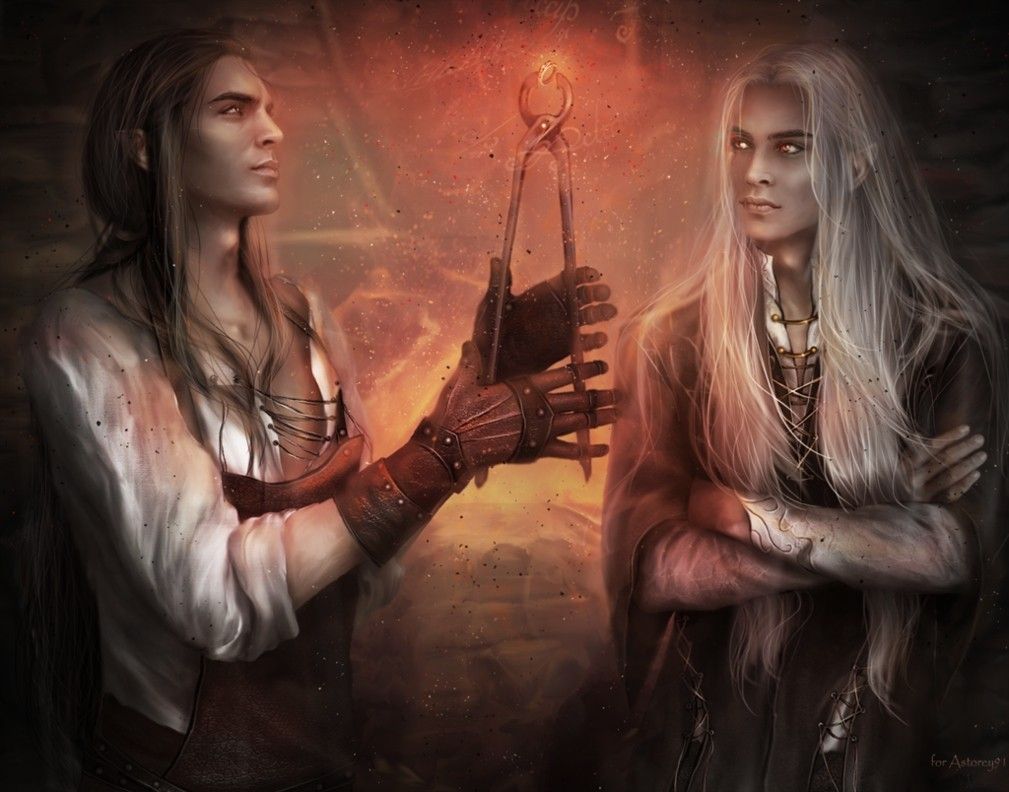

Sauron, Gil-Galad, and Elendil
The conclusion of the Second Age marks the downfall of Sauron. The renowned conflict depicted in the opening scenes of the Lord of the Rings film spanned a duration of seven years. During this time, Sauron, perceiving himself to be trapped, emerged from his seclusion and engaged in a momentous battle against the mightiest representatives of the elven and human realms. The adversaries in question were Gil-galad, the illustrious king of the Noldor, and Elendil, the revered ruler of Arnor and Gondor. Curiously, the initial scenes of the movie do not portray the true significance of the confrontation involving these three formidable figures. In reality, the pivotal moment of the Last Alliance war unfolded when Sauron confronted this indomitable duo.
Sauron, determined to personally take the stage and achieve his objective, sought to vanquish the kings of the two united races who stood in opposition to him. The trio engaged in a relentless and lethal clash, each combatant fighting with unyielding fervor. Although Sauron managed to vanquish both Gil-galad and Elendil, the encounter left him utterly depleted. Gil-galad and Elendil spared no effort to inflict harm upon Sauron, even at the cost of sacrificing their own lives. Elendil wielded Narsil, the ancient and renowned sword forged in the First Age, which would ultimately come into the possession of Aragorn in the waning days of the Third Age. Tragically, Sauron’s blow shattered the sword, leaving Gil-galad and Elendil sprawled upon the ground alongside their adversary, Sauron.
Contrary to the depiction in the film, the original text portrays Sauron lying prostrate on the ground rather than extending his hand to Isildur. Seizing his father’s broken blade, Isildur severed Sauron’s ring finger and hastened towards Mount Doom. The subsequent events that unfolded are well-known. Sauron succeeded in slaying the last king of the Noldor and the sole surviving leader of the men from Numenor before being stripped of his physical form.
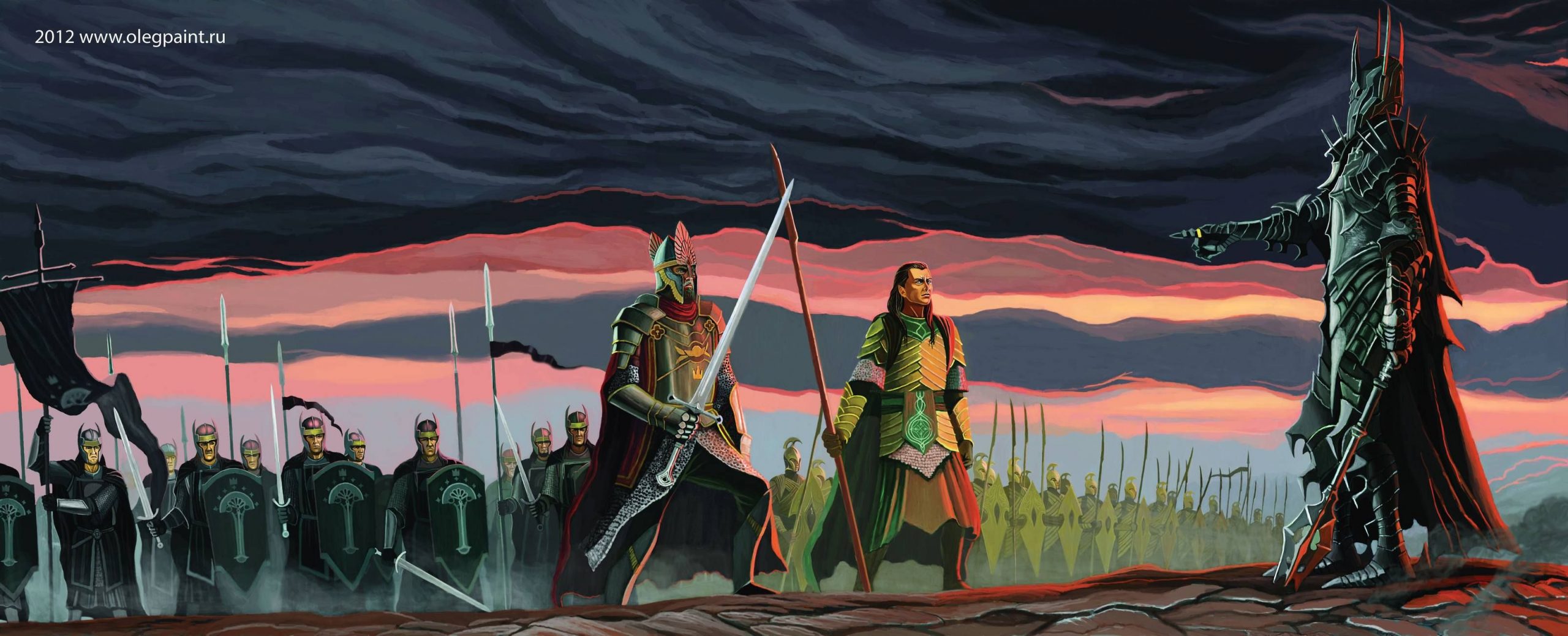

Gothmog and Feanor
Throughout his existence, Gothmog inflicted grievous harm comparable to that of Sauron and Melkor, resulting in the demise of two pivotal figures and the abduction of numerous others. Among the notable casualties attributed to him, the most renowned is undoubtedly Feanor. However, it is essential to note that Gothmog did not engage in a direct one-on-one confrontation that led to Feanor’s demise. Driven by his deep resentment towards Melkor, who had seized the Silmarils, Feanor embarked on a perilous journey to Middle-earth, drawing the Noldor people into his wake. The conflicts that erupted in Lammoth escalated, reaching the very gates of Angband. The Elves fought with such ferocity that a single Elf could vanquish ten Orcs in a single encounter. Despite the initial victories in the open field, Feanor’s judgment faltered, and he rashly launched an assault on Angband with a small contingent of followers. His unwavering belief in imminent triumph clouded his ability to think and act wisely.
Tragically, this reckless endeavor cost Feanor his life. As he ventured into Angband with hopes of confronting Melkor, he fell into an ambush orchestrated by the siege of the Balrogs. One by one, the Balrogs ruthlessly slaughtered those around Feanor. Engaging in a desperate struggle, Feanor valiantly fought against them, but the outcome proved unfavorable. Ultimately, it was Gothmog who delivered the fatal blow. Struck by Gothmog’s onslaught, Feanor’s demise was swift. Lying wounded, he passed away in the arms of his sons, who had come to his aid. In his final moments, Feanor uttered three curses against Morgoth before succumbing to his wounds. However, this would not be the sole legendary figure to fall by the hand of Gothmog.
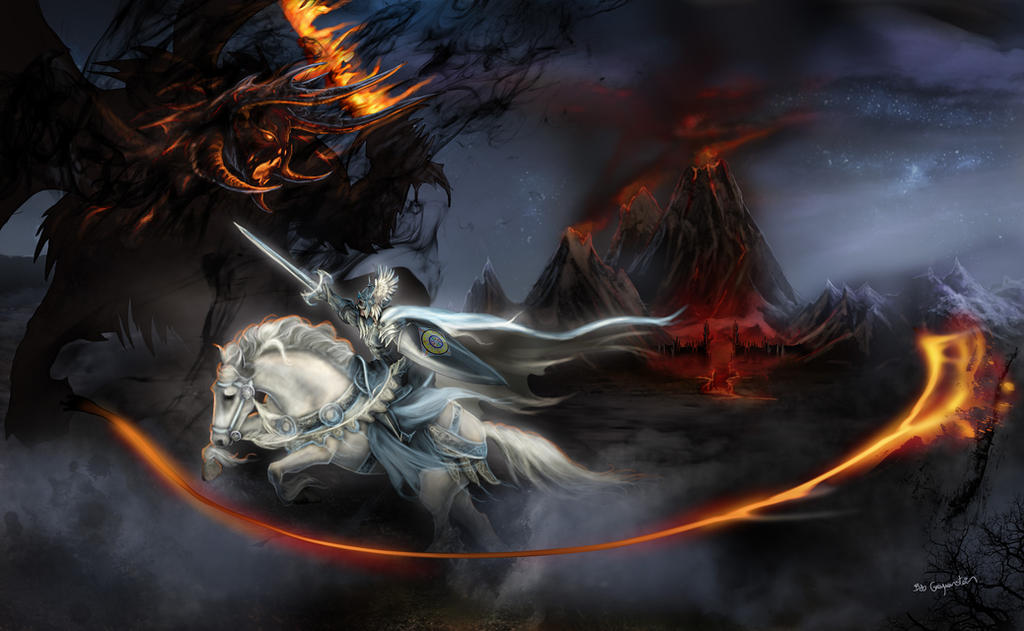

Gothmog and Fingon
When Feanor led the entire Noldor to Middle-earth, it marked the commencement of the prolonged conflict against Melkor’s forces, engulfing the Elves in a protracted war. The hostilities that commenced on the shores of Lammoth persisted until the very gates of Angband. Although Feanor, thrusting himself forward, met his own demise, the resolute efforts of the Elves successfully repelled Morgoth’s armies, forcing him to retreat within the confines of Angband. Morgoth, sealing the doors behind him, remained secluded for precisely sixty years. However, in the year 455 of the First Age, Morgoth and his legions launched a sudden onslaught, shattering the siege and compelling the Elves to retreat. Emboldened by the alliances forged during the six decades of respite and bolstered by additional forces, the united Elves launched a decisive assault against Morgoth. The ensuing conflict, known as the Battle of Unnumbered Tears, marked the dawn of Middle-earth’s decline and the collapse of its majestic kingdoms.
With the combined might of men and dwarves, fighting alongside the Elves this time, Fingolfin led the charge from the west while the sons of Feanor advanced from the east. Notable figures on the western front included Hurin and Huor, whereas the eastern flank boasted Ulfang, renowned as the Easterlings. The Elves harbored the belief that they could push back their adversary, but their advance was impeded when they encountered Glaurung, an evolved dragon of immense power. Moreover, treachery befell the eastern flank as Ulfang and his human followers turned against the Elves, launching attacks from within. Gwindor, who commanded the Western forces, succumbed to madness upon sighting his brother Gelmir emerging from the dungeons of Angband, resulting in a disintegration of their ranks and an erratic assault. Fingon, compelled to pursue Gwindor, joined the fray, launching an unconventional attack. Chaos intensified when Balrogs assailed the disorganized western flank.
Meanwhile, Morgoth deployed forces from the eastern side, pushing westward and inflicting a severe blow upon the western continent. The definitive moment of defeat arrived with the demise of Fingon at the hands of Gothmog. Gothmog emerged victorious in the fateful duel between the two adversaries, engaging in singular combat on the battlefield. Striking Fingon from behind with his flaming whip, reminiscent of the weapon wielded by the Balrog portrayed in the film, Gothmog sealed the final blow with his axe, consigning Fingon to the halls of Mandos. With this devastating loss inflicted by Gothmog, the Elves suffered a definitive defeat, leaving them no choice but to retreat in disarray.
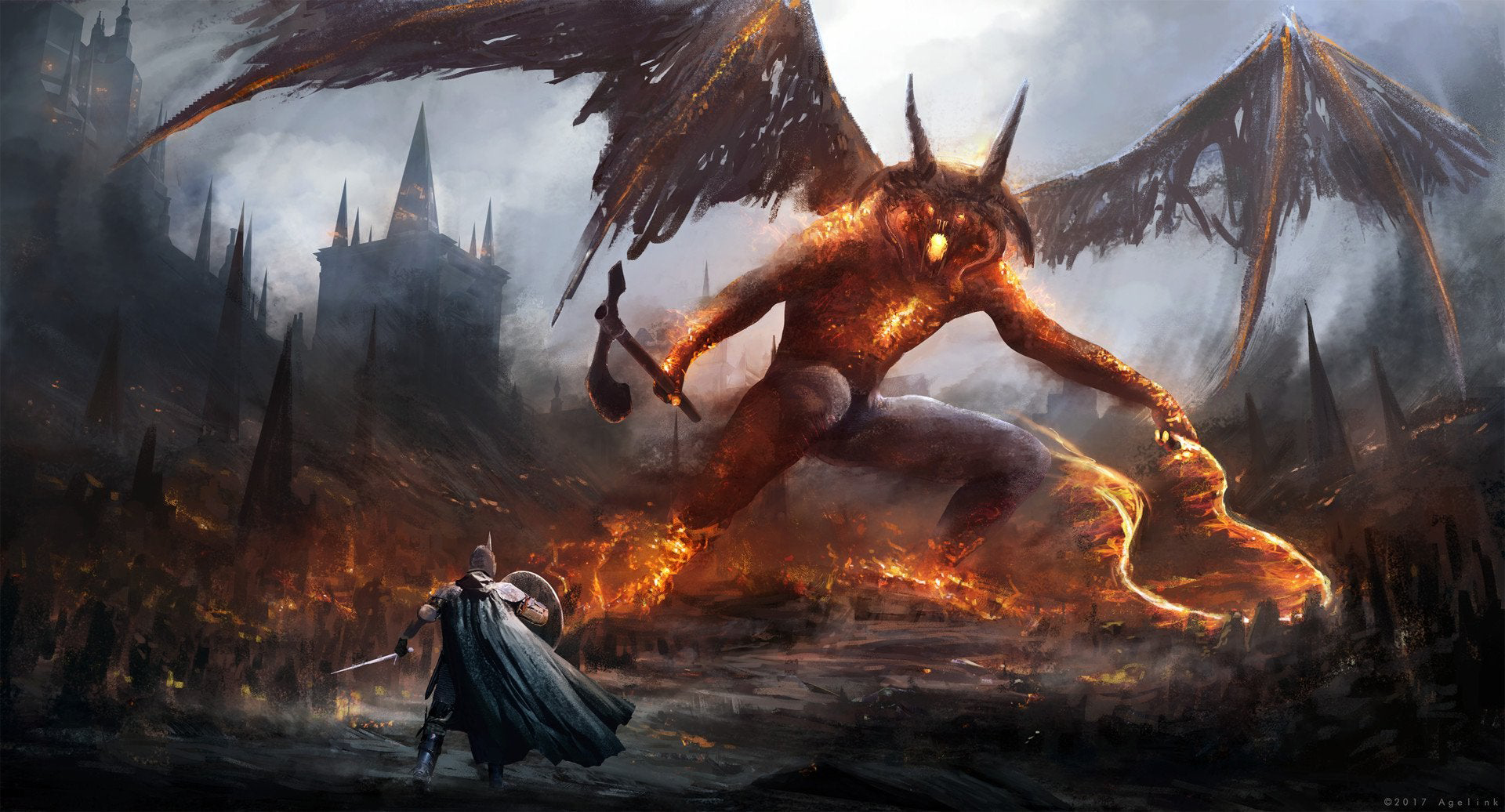
Sources and Further Information
- Tolkien, J.R.R & Tolkien, Christopher. “The Silmarillion,” Houghton Mifflin Company (2004)
- Tolkien, J.R.R & İpek, Çiğdem Erkal “Translator”. “Yüzüklerin Efendisi,” Metis Yayınları (2007)
- Tolkien, J.R.R & Tolkien, Christopher. “The Children of Húrin,” HarperCollins (2007)
- Tolkien, J.R.R & Tolkien, Christopher. “Beren and Lúthien,” Houghton Mifflin Harcourt (2017)
- Tolkien, J.R.R & Tolkien, Christopher. “The Fall of Gondolin,” Houghton Mifflin Harcourt (2018)
- Orta Dünya – Legendarium Türkiye, YouTube
- Yüzüklerin Efendisi – Orta Dünya, YouTube
- Nerd of the Rings, YouTube
